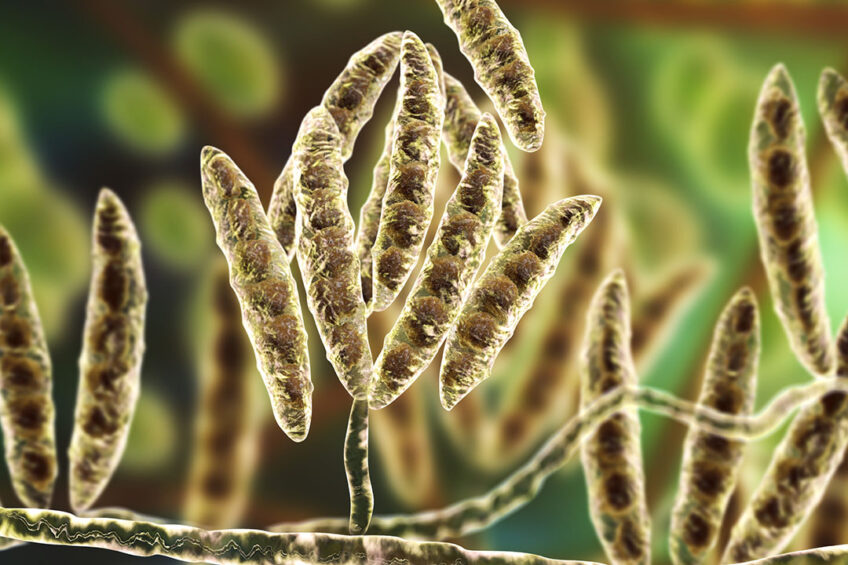Mycotoxin review and future threats from emerging mycotoxins

Feed millers and nutritionists should start with complete feed first before examining raw materials when looking for mycotoxin contamination.
That was one of the key messages from Dr Swamy Haladi, global programme manager for the Mycotoxin Risk Management programme at Trouw Nutrition, who shared the company’s annual survey analysis of just under 32,000 samples.
These included 19,400 samples of raw materials (grains, grain by-products, protein meals, silages, other protein products and unspecified samples) and 12,544 samples of complete feeds from more than 40 countries collected last year.
Highest mycotoxin level (ppb) found in Spain
Of these samples, 89% had contamination for at least one mycotoxin, while the percentage contamination after applying LOD/LOQ was 51%. The highest level of mycotoxin found in all the samples was 25,000 parts per billion (ppb) Fumonisin in Spain.
Rapid analysis
A lot of emphasis is placed on rapid mycotoxin analysis with 600 tests a week carried out on the Big 6 (Fumonisin, Zearalenone, Aflatoxin, Ochratoxin, T-2 Toxin and Deoxynivalenol) across the globe with results going into a mycotoxin database.
Highest % level of contamination
Overall data analysis showed the highest percentage level of contamination above LOD in Aflatoxin (63%) with the mycotoxin being most prevalent in Asia, while the highest median concentration ppb was in Fumonisin (1,200ppb), which was commonly found in Asia. T-2 toxin was present most in North America.
Raw material analysis
Analysing raw materials, Dr Haladi said there was evidence of very high levels of contamination of Aflatoxin, T-2 and Deoxynivalenol in corn silage, which he found surprising, although this could be partly due to poor practices during silage making. Maize was also much more affected than wheat. Soybean was much less affected by any of the mycotoxins except Aflatoxin. Fumonisin concentrate levels (ppm) were highest across all the raw materials.
Mycotoxin levels in livestock feed
Commenting on complete feed analysis results, Dr Haladi said that as a veterinarian this was most important as this was often the area where the problem starts. High levels of mycotoxins except for T-2 were found in broiler, layer, piglet, pig, ruminant and pet feed with contamination in some cases up to 80%.
There was some variability in concentration levels but Alflatoxin was generally around 10-12ppm across all feed species, with OTA levels slightly lower and T-2 somewhere between 30-80ppm. Higher levels of Fumonisin were found, particularly in broiler and layer feed. There was a better distribution range of mycotoxins in feed than in raw materials, he added, saying if problems occurred it would be best to look at feeds first rather than raw materials.
What toxicity levels mean for livestock?
Dr Haladi said it was important to look at what the numbers and levels of toxicity meant to livestock, taking into account the type and concentration of mycotoxins, the duration and sequence of exposure and the number of mycotoxins involved. Pigs are particularly susceptible to Deoxynivalenol, Zearalenone, Ochratoxins and Aflatoxin, while poultry struggled with T-2, Ochratoxins and Aflatoxin.
Looking ahead to the 2022 season
Dr Haladi said he expected to see a big challenge for the dairy sector in terms of Aflatoxin and a medium toxicity for Deoxynivalenol and Fumonisin, while there was a very risk to piglets from Fumonisins. The risks were slightly lower for sows and poultry.
Commenting on emerging mycotoxins, he said they were becoming a major issue, and of particular concern in Europe, which could lead to additional regulations in the future. These emerging mycotoxins are neither routinely analysed nor regulated through legislation but there is evidence their incidence is growing rapidly. Among those to watch out for in the Fusarium mycotoxins are Fusaric Acid, Fusaproliferin, Enniatins, Beauvericin, Culmorin and Butenolide. Further research is being planned in this area.
Concluding, he said mitigating mycotoxins was important, stressing that the strength of the gut wall was vital to lower the bioavailability of toxins.











